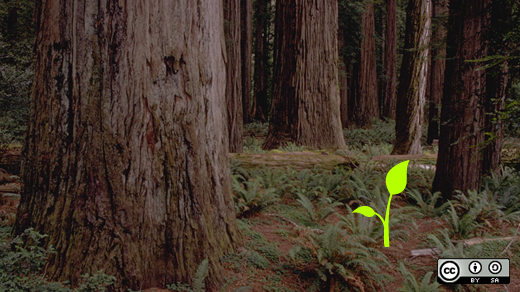This summer, it’s Walter Isaacson’s biography of Steve Jobs’ singular genius that seems to be propped open on beach towels, in hammocks and at every third airplane seat. As fascinating as Jobs’ person, career, and legacy are, the intense interest in his insane greatness raises a question. What if we directed that level of intensity and interest at awakening the genius (if slightly less great and hopefully less insane) inside of each and every one of us—each child, each student, each parent, each working person?
What leader doesn’t want his or her organization to be more resilient, inventive, and inspiring? What leader hasn’t called for the full ingenuity, passion, and initiative of every person in the organization? Yet how many organizations are designed to unleash and mobilize the full potential of the people who work inside them?
This article was originally posted on the Management Innovation eXchange (MIX), an open innovation project aimed at reinventing management for the 21st century.
Those were the questions on the table when David Kelley, the founder and chairman of leading design and innovation firm IDEO, joined Stanford professor Bob Sutton on the stage at the recent MIX Mashup, our first-ever gathering of the vanguard of management innovators earlier this summer. Widely recognized as one of the world’s leading design innovators, Kelley has all of the titles and awards to show for it (Stanford professor, member of the National Academy of Engineers, National Design Award), but more importantly, he has dedicated his career to making creativity accessible and routine—and to unleashing that native quality in individuals and organizations.
After decades spent re-training and un-learning executives and design professionals—Kelley conceived of a school that would get it right from the start, one that would produce a generation of innovators prepared to meet the challenges of the day. He founded the Hasso Plattner Institute of Design, or “d.school,” at Stanford in 2005 as a multi-disciplinary mashup of design thinking principles, real-world projects, and radical collaboration.
Today some 800 Stanford engineering, business, science, law, education, and other students flock to the humming studio-meets-kindergarten d.school building to take one of seventeen classes a quarter. As an early team member and faculty of the d.school, Sutton brings equal fervor to the project of revitalizing the "supply side” of the creative economy.
While the d.school classes run the gamut from “Entrepreneurial Design for Extreme Affordability” to “d.compress: Designing Calm” to real-world projects for big-name companies like Procter & Gamble and Google, the curriculum is essentially a journey to what Kelley calls “creative confidence.”
“Everybody’s wildly creative underneath,” says Kelley. “That child’s mind is still in there. My mission is to convert people to confidence—to take people who don’t think of themselves as creative—especially people who think of themselves as primarily analytical—and move them from the fear of being judged to familiarity and ease with the creative process. It’s amazing how quickly people flip.”
The idea isn’t just to build a better brainstormer—but to equip people with what the Stanford psychologist Albert Bandura terms “self-efficacy.” Kelley, who ranks Bandura among the most important psychologists in history (after Freud, Skinner, and Jung), describes self-efficacy as “the sense that you can change the world and that you can do what you set out to do.” Imagine if that quality shared pride of place on diplomas and résumés with degrees and competencies? Add resilience, equanimity, and compassion—and you see the building blocks of a “skill set” that’s fit for the future.
But how do we get from here to there? How do you flip from insecurity and fear to mastery and confidence in your creative abilities?
Desensitize yourself to failure
According to Kelley, so many of us opt out of thinking of ourselves as creative because of our fear of failure and judgment. While kids bring an experimental, playful attitude to trying new things, too many of us “grown ups” get wrapped around the axle when confronted with a blank sheet of paper.
Kelley offers up a parable. “When John Cassidy came out with his first book, Juggling for the Complete Klutz, I got it and thought it was brilliant. He spends the first half of the book just getting you used to the ball hitting the floor. All you do is desensitize yourself to the ball hitting the floor. It seems so silly. But it’s so easy to learn to juggle this way because after you’ve done it about 400 times, you have no fear that the ball is going to hit the floor.”
It’s the same idea when it comes to developing people’s confidence in their creative ability. Once you’ve had the experience of trying lots of new things, flailing and failing, and celebrating the smallest successes along the way, says Kelley, “you can take risks and you don’t worry about the boss so much. We all act so weird and so badly when we’re insecure.”
Another pathway toward creative confidence is to take people out of their domain of expertise and get them to solve a problem in an arena where aren’t encumbered by their knowledge and experience. “Edison did this,” says Sutton. “he would assign somebody a job they don’t know how to do—he’d have a chemical engineer solve a mechanical engineer’s problem.” The fresh eyes and freedom that comes along with naiveté not only produces more (and often surprising) insight, it also offers a bonus boost of creative confidence.
Do to Think
At the core of the d.school approach is a bias toward action. Sutton calls it “do to think.” For so many smart students (and leaders), “it’s ready aim, aim, aim, aim and they never actually fire.” The d.school seeks to reverse the order by emphasizing prototyping and iteration over planning and strategy.
What’s at the core of the entrepreneurship curriculum? The business plan competition. “You spend the whole semester thinking about your business plan, developing your strategy, crafting the idea, and then the last day of class it gets judged,” says Sutton. A new class at the d.school, called Launch Pad, is taught by successful entrepreneurs and requires teams to launch their products by week five. Sutton shares the example of the Pulse News Reader: “They launched their company, got sued by the New York Times and hired by the San Jose Mercury News in the fifth week of class. Now there are lots of failures too, but that’s life in the startup world.”
Kelley’s advice: the next time you sit down to make a plan, “just jump in and build a prototype and iterate.”
Don’t Look for Answers—Ask More Questions
Both Sutton and Kelley emphasize the importance of returning to that playful, childlike state of openness and curiosity. But that’s easier said than done once you’ve earned your degrees, put in your years, and developed your sense of authority. One sure antidote: whenever you’re tempted to produce an answer, ask a question.
Why does inquiry beat certainty? Genuine questions unleash humility, curiosity, even vulnerability. And they offer up a powerful advantage in a world of expanding complexity and intense change—a world in which no single individual can possibly have all of the answers, but an open, curious one can attract more perspectives, surface more possibilities, and enlist more help than one closed off by certitude.
What’s more, the best questions are the bedrock of all creativity. Those classics—Why? Why not? What if?—are not only the staple of three-year-olds everywhere, they are fundamentally subversive in nature. Try making it through your next meeting making no pronouncements, only asking questions. You may not uncover the most brilliant ideas, but you might just start thinking of yourself and your colleagues a little differently.
What’s your question? Do you have any habits or disciplines that build your creative confidence? Share your stories in the comments.







2 Comments